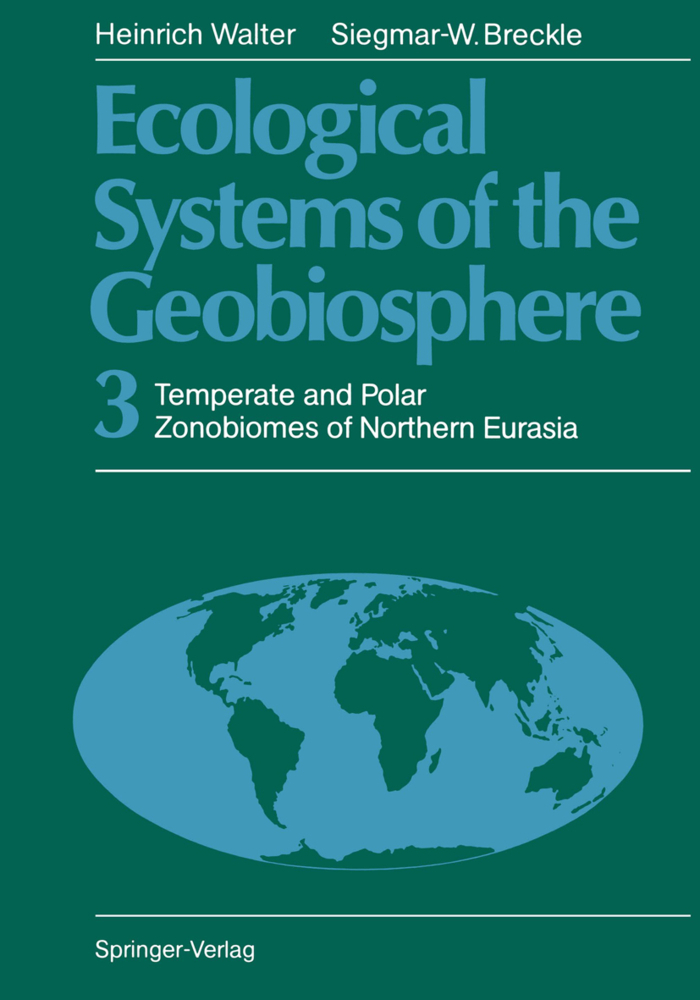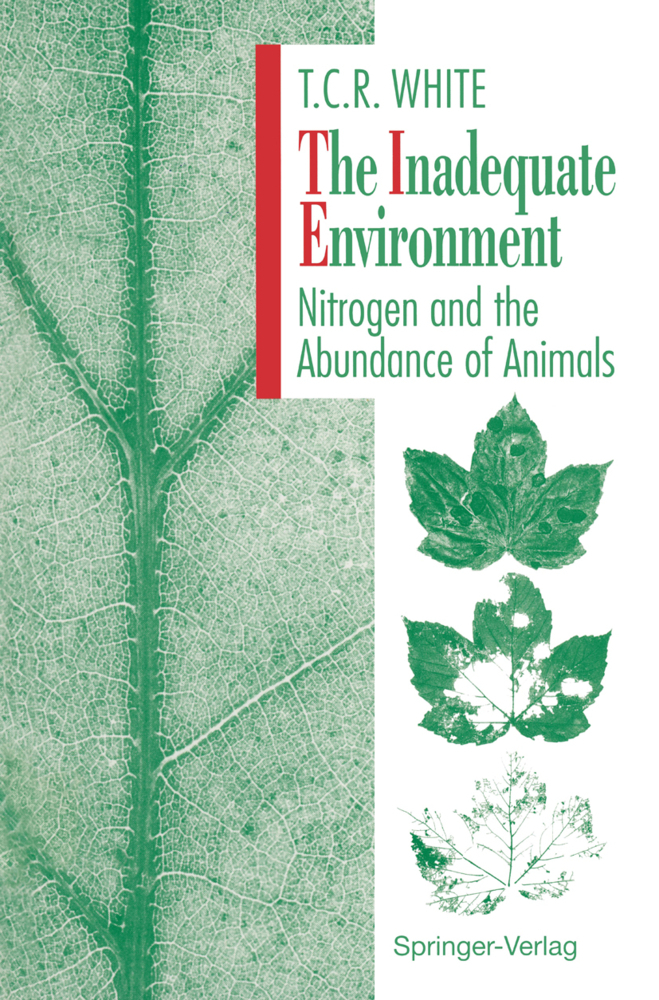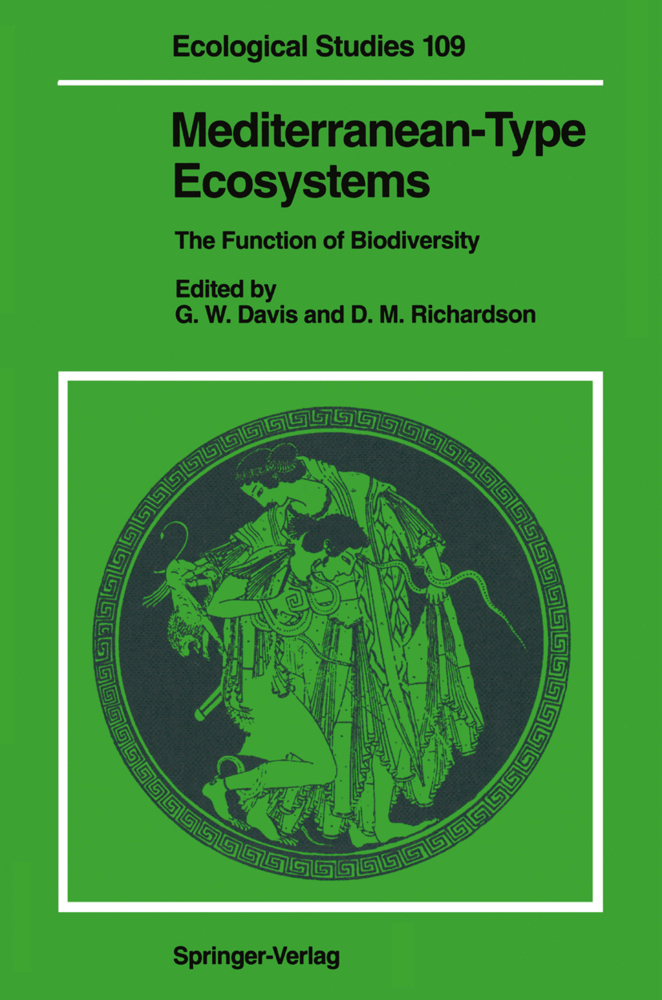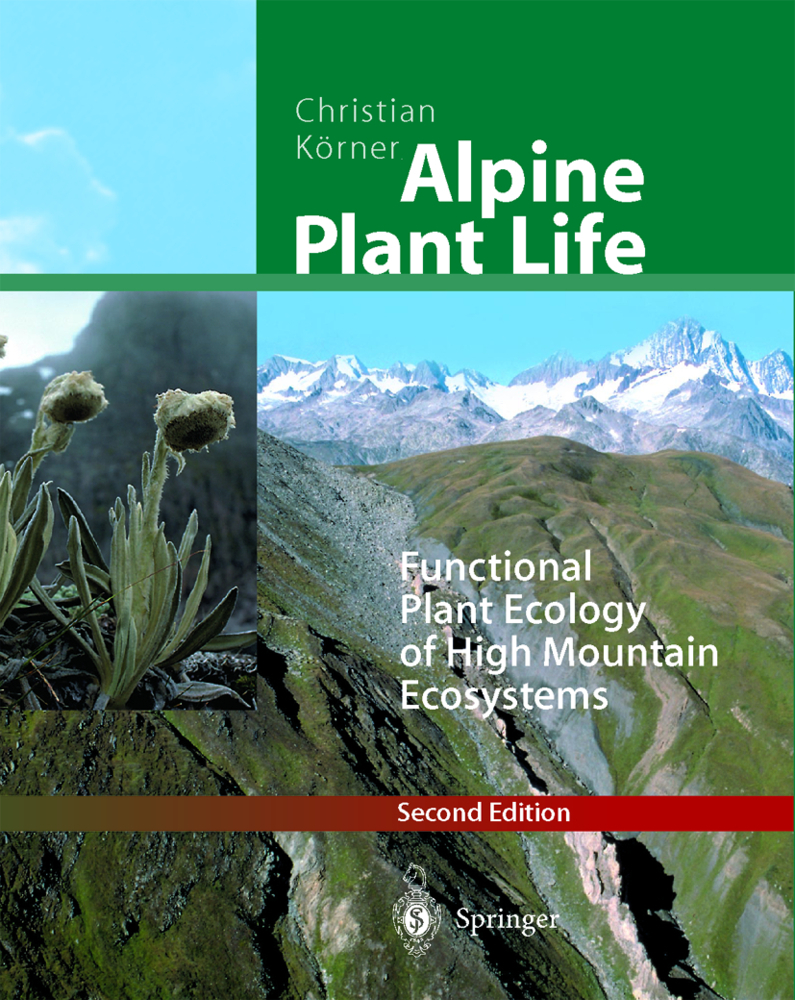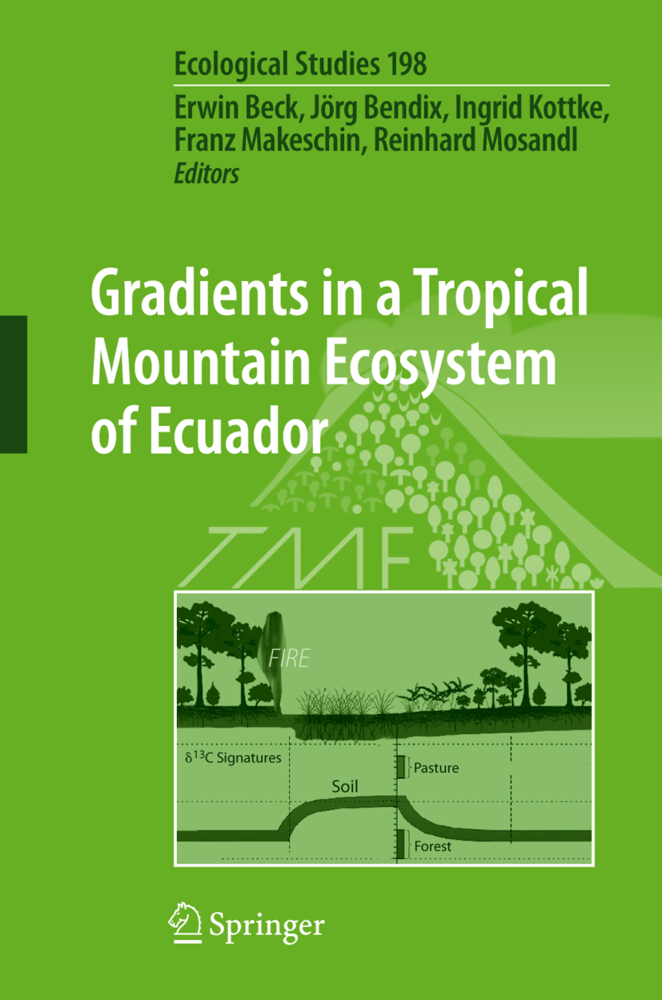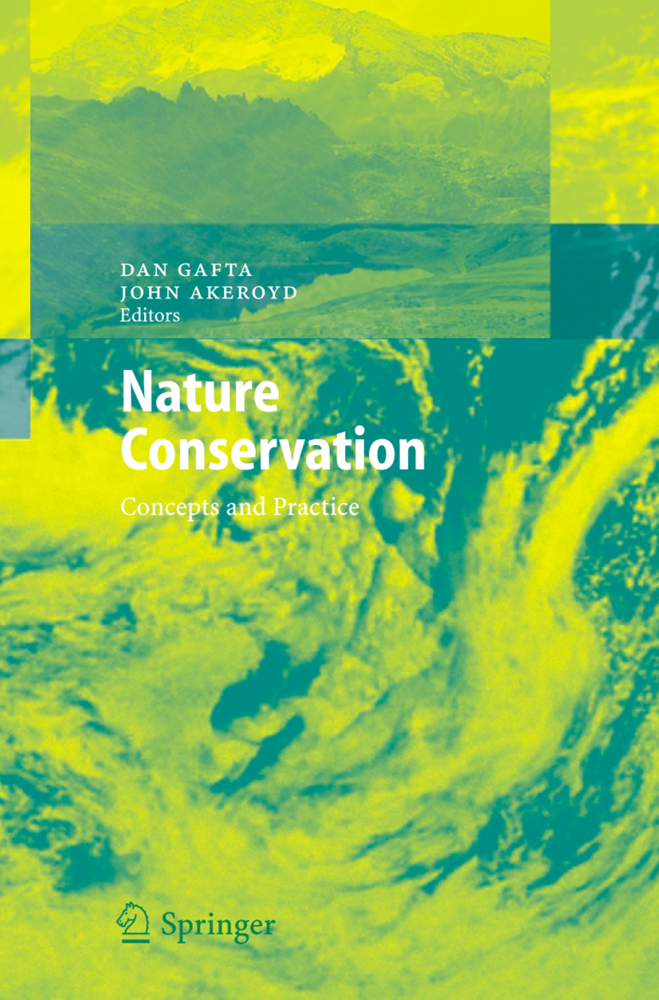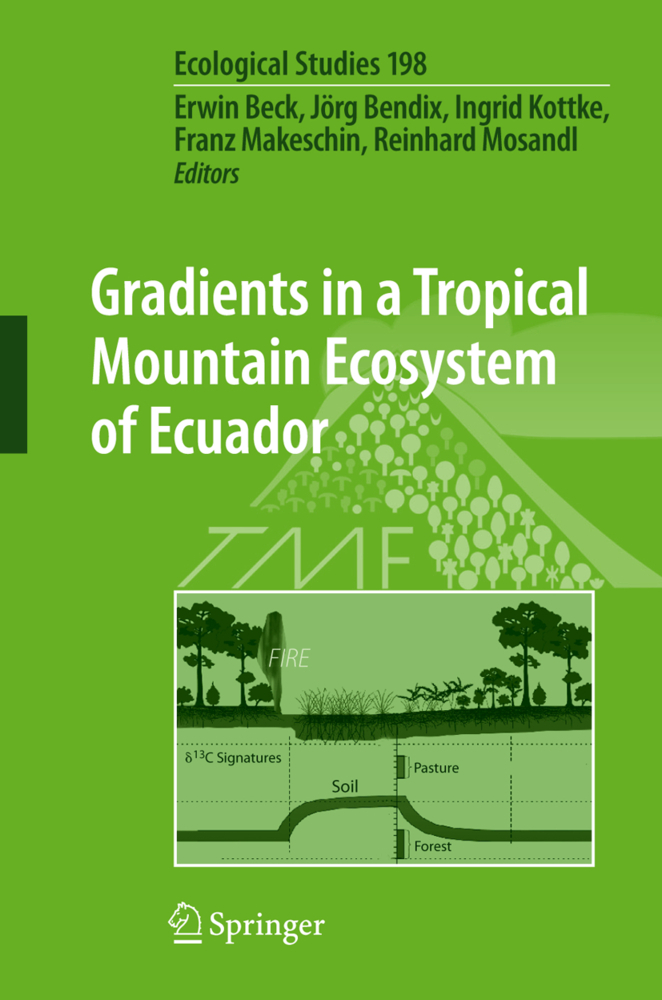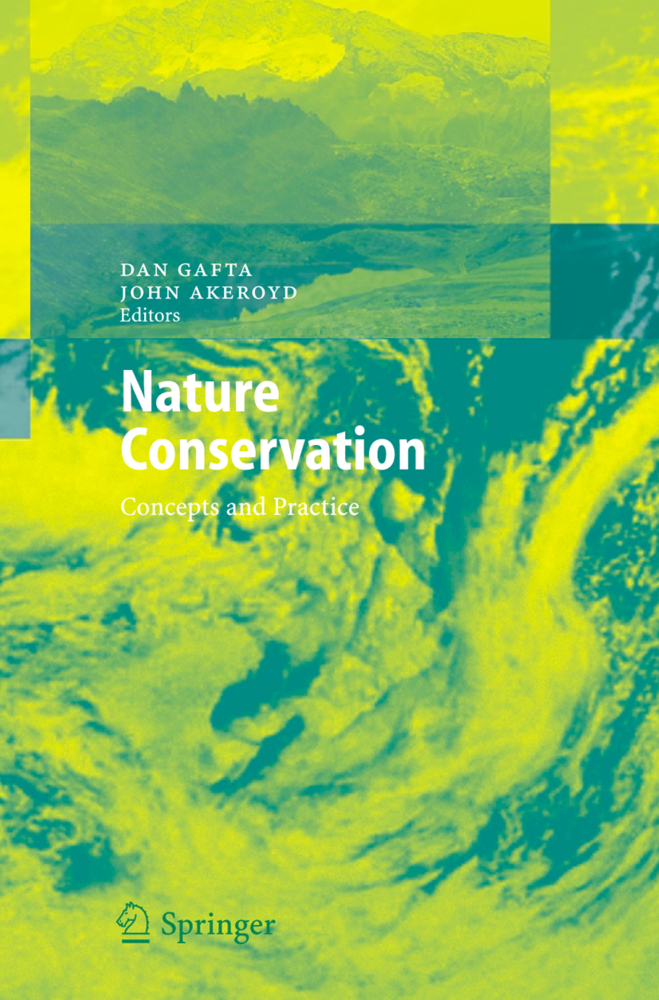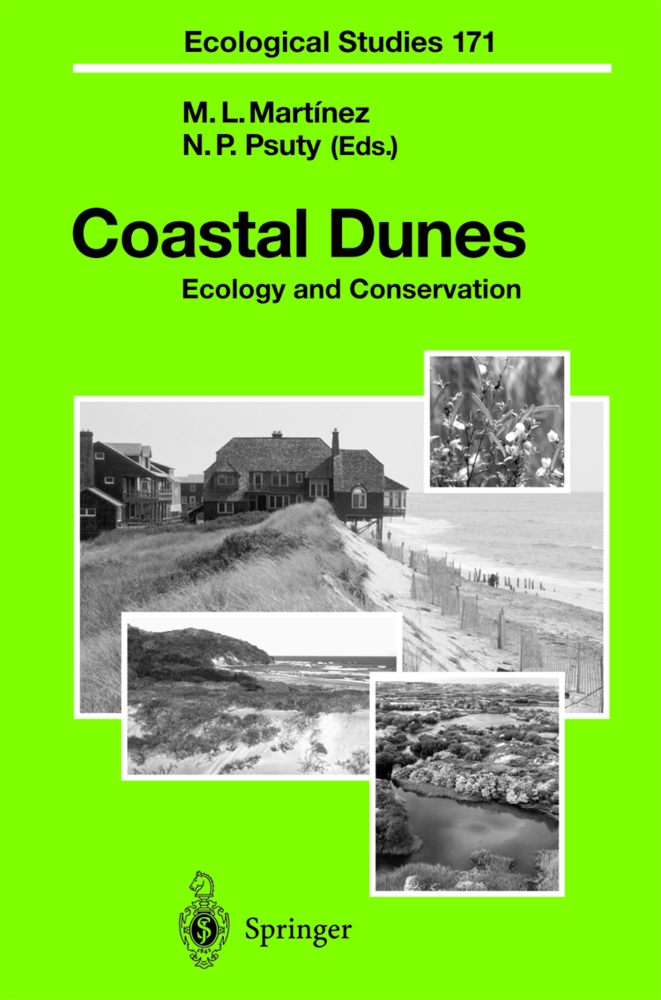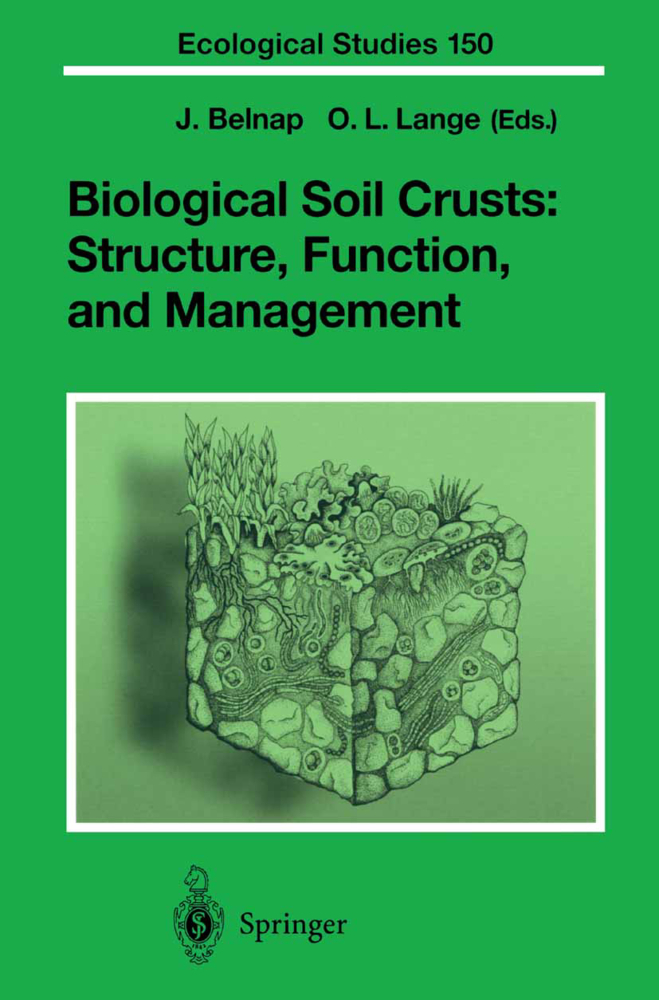Ecological Systems of the Geobiosphere
3 Temperate and Polar Zonobiomes of Northern Eurasia
Ecological Systems of the Geobiosphere
3 Temperate and Polar Zonobiomes of Northern Eurasia
By the end of the last century, the only region in all of Europe where the natural vegetation remained untouched over large expanses was Eastern Europe. Information on the vegetation of this region however, remained mostly unavailable to western scientists although the ecological approach to botanical research originated in Eastern Europe. Heinrich Walter was born in Russia, studied Natural Sciences - with emphasis on botany - in Odessa and is familiar with all relevant Russian literature on ecology. This volume thus offers scientists worldwide a unique and comprehensive survey of all relevant research, including the mostly unknown literature published in Russian.
1.1 Climate
1.2 The Soils
1.3 The Producers
1.4 Consumers
1.5 The Decomposers
1.6 Ecological Investigations and Ecosystem Research
1.7 Subdivision of Zonobiome VI in Europe
1.8 Orobiome VI: the Northern Edge of the Alps
1.9 Pedobiomes of ZB VI
1.10 Zonoecotones
2: Subzonobiome VII of the Semi-Arid Steppes of Eurasia
2.0.1 General Introductory Remarks on Zonobiome VII
2.0.2 The Forest Steppe as Transitional Zone (Zonoecotone VI/VII).
2.1 The Climate
2.2 The Soils
2.3 The Producers
2.4 The Consumers
2.5 The Decomposers
2.6 Steppe Ecosystems
2.7 Subdivision of Steppes into Subzonobiomes and Biomes
2.8 The Orobiomes of the Steppe Zone
2.9 Pedobiomes of the Steppe Zone
2.10 Zonoecotone VII/VIII in Siberia
3: Subzonobiome VIIa of the Arid Semi-Desert in the Caspian Lowland
3.0 General
3.1 The Climate
3.2 The Soils
3.3 The Producers
4: Subzonobiome VIIa of the Arid Semi-Deserts and Deserts of Kazakhstan
4.0 General
4.1 The Climate
4.2 The Soils
4.3 The Producers
4.4 The Consumers
4.5 The Decomposers
4.6 Ecosystem Research
4.7 Subdivision of the Kazakhian Semi-Desert into Biomes
4.8 Orobiomes
4.9 Pedobiomes
5: Subzonobiome VII (rIII) of the Extremely Arid Deserts of Middle Asia: the Biome Group Middle Asia
5.0 General
5.1 The Climate
5.2 The Soils
5.3 The Producers
5.4 The Consumers
5.5 The Decomposers
5.6 Quantitative Ecosystem Research
5.7 Subdivision of Middle Asia into Biomes
5.8 Orobiome VII (rIII) of Middle Asia
5.9 Pedobiomes: Amphibiomes of the Floodplains of the Amu-Darya.
5.10 Zonoecotone to the Deserts of Central Asia
6: Extremely Arid Subzonobiome VII (rIII) of the Central Asian Deserts
6.0 General
6.1 Transitional Region to Outer Mongolia (excluding the Gobi Desert)
6.2 The Gobi Desert
6.3 The Pei Shan Desert
6.4 The Tarim Basin with the Takla Makan Desert
6.5 Kansu or Hessi Corridor
6.6 The Ala Shan Desert
6.7 The Ordos Desert
6.8 The Tsaidam Basin (Transitional to the Cold Plateaux)
7: Extremely Cold-Arid Subzonobiome VII (tIX) of the Cold and High Plateau Deserts of Central Asia
7.0 General Situation of the Cold Deserts of the High Mountain Plateaux of Asia
7.1 The High Plateau of Tibet
7.2 The Pamirs - an Ecologically Well-Studied High-Mountain-Desert
8: Zonobiome VIII of the Boreal Conifer Zone (Taiga) of Euro-Siberia
8.0 Introduction
8.1 The Climate (Subzonobiomes)
8.2 Zonal Soils
8.3 The Producers
8.4 The Consumers
8.5 The Decomposers
8.6 Ecosystems of Zonobiome VIII
8.7 Subdivision of Zonobiome VIII
8.8 The Orobiome of Zonobiome VIII
8.9 Pedobiomes of Zonobiome VIII
8.10. Zonoecotone VIII/IX: the Forest Tundra
9: Zonobiome IX: The Arctic Tundra of Eurasia
9.1 Climate
9.2 The Soils
9.3 The Producers
9.4 The Consumers
9.5 The Decomposers
9.6 Ecosystem Research
9.7 The Subdivision of the Arctic ZB IX
9.8 Orobiomes IX of the Tundra Region
9.9 Arctic Pedobiomes
9.10. The Zonoecotone of Perpetual Snow Patches
10: Interzonal and Multizonal Orobiomes of Euro-Siberia
10.0 General
10.1 The Crimean Mountains
10.2 The Ural Mountains
10.3 The Altai Mountains
10.4 The Caucasian Mountains
References.
1: Zonobiome VI: The Temperate Nemoral Zones of Europe
1.0 Introduction1.1 Climate
1.2 The Soils
1.3 The Producers
1.4 Consumers
1.5 The Decomposers
1.6 Ecological Investigations and Ecosystem Research
1.7 Subdivision of Zonobiome VI in Europe
1.8 Orobiome VI: the Northern Edge of the Alps
1.9 Pedobiomes of ZB VI
1.10 Zonoecotones
2: Subzonobiome VII of the Semi-Arid Steppes of Eurasia
2.0.1 General Introductory Remarks on Zonobiome VII
2.0.2 The Forest Steppe as Transitional Zone (Zonoecotone VI/VII).
2.1 The Climate
2.2 The Soils
2.3 The Producers
2.4 The Consumers
2.5 The Decomposers
2.6 Steppe Ecosystems
2.7 Subdivision of Steppes into Subzonobiomes and Biomes
2.8 The Orobiomes of the Steppe Zone
2.9 Pedobiomes of the Steppe Zone
2.10 Zonoecotone VII/VIII in Siberia
3: Subzonobiome VIIa of the Arid Semi-Desert in the Caspian Lowland
3.0 General
3.1 The Climate
3.2 The Soils
3.3 The Producers
4: Subzonobiome VIIa of the Arid Semi-Deserts and Deserts of Kazakhstan
4.0 General
4.1 The Climate
4.2 The Soils
4.3 The Producers
4.4 The Consumers
4.5 The Decomposers
4.6 Ecosystem Research
4.7 Subdivision of the Kazakhian Semi-Desert into Biomes
4.8 Orobiomes
4.9 Pedobiomes
5: Subzonobiome VII (rIII) of the Extremely Arid Deserts of Middle Asia: the Biome Group Middle Asia
5.0 General
5.1 The Climate
5.2 The Soils
5.3 The Producers
5.4 The Consumers
5.5 The Decomposers
5.6 Quantitative Ecosystem Research
5.7 Subdivision of Middle Asia into Biomes
5.8 Orobiome VII (rIII) of Middle Asia
5.9 Pedobiomes: Amphibiomes of the Floodplains of the Amu-Darya.
5.10 Zonoecotone to the Deserts of Central Asia
6: Extremely Arid Subzonobiome VII (rIII) of the Central Asian Deserts
6.0 General
6.1 Transitional Region to Outer Mongolia (excluding the Gobi Desert)
6.2 The Gobi Desert
6.3 The Pei Shan Desert
6.4 The Tarim Basin with the Takla Makan Desert
6.5 Kansu or Hessi Corridor
6.6 The Ala Shan Desert
6.7 The Ordos Desert
6.8 The Tsaidam Basin (Transitional to the Cold Plateaux)
7: Extremely Cold-Arid Subzonobiome VII (tIX) of the Cold and High Plateau Deserts of Central Asia
7.0 General Situation of the Cold Deserts of the High Mountain Plateaux of Asia
7.1 The High Plateau of Tibet
7.2 The Pamirs - an Ecologically Well-Studied High-Mountain-Desert
8: Zonobiome VIII of the Boreal Conifer Zone (Taiga) of Euro-Siberia
8.0 Introduction
8.1 The Climate (Subzonobiomes)
8.2 Zonal Soils
8.3 The Producers
8.4 The Consumers
8.5 The Decomposers
8.6 Ecosystems of Zonobiome VIII
8.7 Subdivision of Zonobiome VIII
8.8 The Orobiome of Zonobiome VIII
8.9 Pedobiomes of Zonobiome VIII
8.10. Zonoecotone VIII/IX: the Forest Tundra
9: Zonobiome IX: The Arctic Tundra of Eurasia
9.1 Climate
9.2 The Soils
9.3 The Producers
9.4 The Consumers
9.5 The Decomposers
9.6 Ecosystem Research
9.7 The Subdivision of the Arctic ZB IX
9.8 Orobiomes IX of the Tundra Region
9.9 Arctic Pedobiomes
9.10. The Zonoecotone of Perpetual Snow Patches
10: Interzonal and Multizonal Orobiomes of Euro-Siberia
10.0 General
10.1 The Crimean Mountains
10.2 The Ural Mountains
10.3 The Altai Mountains
10.4 The Caucasian Mountains
References.
Walter, Heinrich
Breckle, Siegmar-Walter
Gruber, Sheila
| ISBN | 978-3-642-70162-7 |
|---|---|
| Medientyp | Buch |
| Copyrightjahr | 2011 |
| Verlag | Springer, Berlin |
| Umfang | XII, 581 Seiten |
| Sprache | Englisch |

